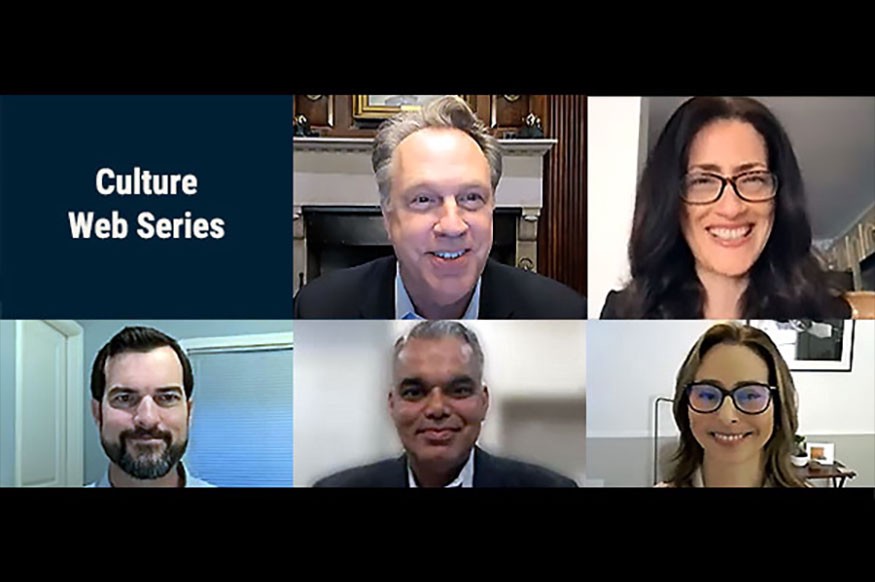
As part of its initiative to foster discussion about culture and conduct in the financial services industry, the New York Fed last month hosted a virtual event titled “Shifting Norms? The Intersection of Technology and Culture in Financial Services.” This webinar — the latest in a series — focused on how technology and digitization have disrupted or otherwise influenced culture in financial services.
In opening remarks, New York Fed President John Williams noted that rapid technological change has touched many aspects of our lives, including the fundamental ways we live and work. Widespread adoption of technology has brought about benefits such as increased flexibility through hybrid work. At the same time, technological advances across the banking industry raise questions and challenges related to corporate culture and employee behavior.
During the event, a panel of experts in business, psychology, and organizational theory discussed how technology can affect institutional norms, behaviors, and decision-making. Here are a few takeaways from the discussion:
- Tech, communications, and accountability: While technology delivers the benefit of connecting workers from multiple locations to collaborate, it also limits the number and serendipitous nature of interactions that colleagues would have in a shared physical environment. In particular, panelists noted that remote work has the potential to reduce the “potency” of interpersonal communications and an employee’s sense of accountability. “We know that accountability is reduced when we feel less connected and more distanced from the people we are interacting with, or the events that are taking place,” said Nathanael Fast, a professor at the University of Southern California’s Marshall School of Business. “Technology certainly has the tendency to increase moral distancing,” he noted. The New York Fed’s Governance & Culture Reform team plans to further explore this theme and potential implications for industry culture.
- Increased collection and reliance on data and algorithms: Greater use of technology among today’s workforce means that organizations are gathering large amounts of data on their employees, internal sub-cultures, and customers. “There’s a whole range of ways in which employees are communicating with each other, and we now have records of all that communication,” said Sameer B. Srivastava, a professor at the University of California, Berkeley’s Haas School of Business. “We now have the tools — from machine learning to computational linguistics — which are increasingly being deployed to help us pull out cultural signals,” he added, as data can be used to identify traits of individuals and teams within an organization. The panelists cautioned that computer-based algorithmic tools are not perfect and can address or exacerbate human bias in application and decision-making. The use of algorithms often walks a fine line, toggling between gathering insights to improve culture and surveilling employees to the point of damaging trust and hurting culture. The speakers also noted that transparency with employees is important, and workers should be made aware of what processes their employers track.
- Implications of digitization and decentralized finance: Over the years, financial institutions have adapted new technologies to support everything from their core business processes to innovative product offerings for consumer and client use. Notably, these new and often opaque technologies present risks for governance teams, regulators, policymakers, and consumers alike. Regarding digitization and decentralized finance tools, “we want to make sure that we don’t segregate the data and information so that some people have greater access to manipulate or create what we could call ‘structural secrecy’ around it,” noted Brandy Aven, a professor at Carnegie Mellon University’s Tepper School of Business.
To view the panel discussion in its entirety, see the event page. For more about the New York Fed’s work in this area, see Governance and Culture Reform.
Shelley Pitterson is a corporate communications specialist in the Communications and Outreach Group at the New York Fed.
This article was originally published by the New York Fed on Medium.
The views expressed in this article are those of the contributing authors and do not necessarily reflect the position of the New York Fed or the Federal Reserve System.














